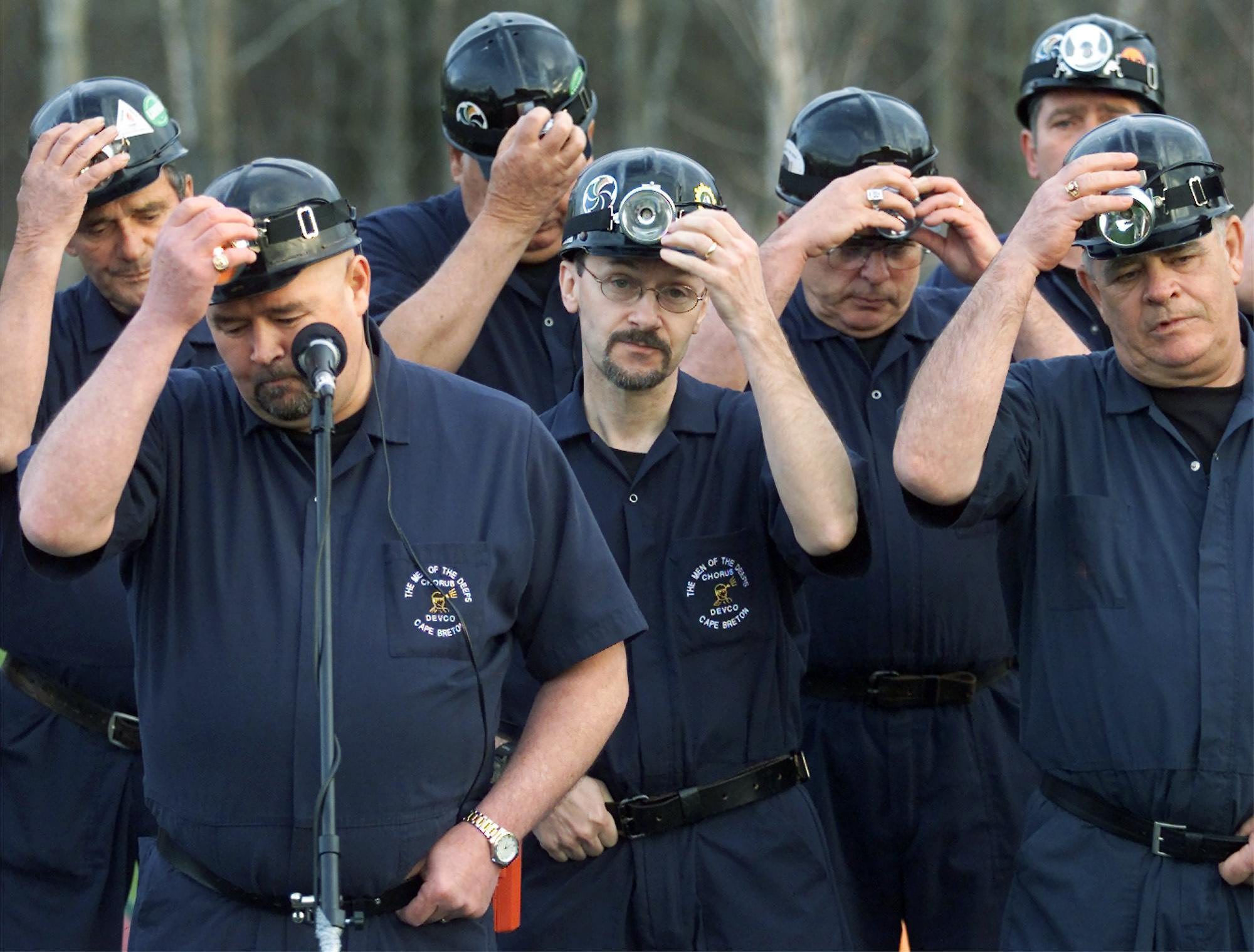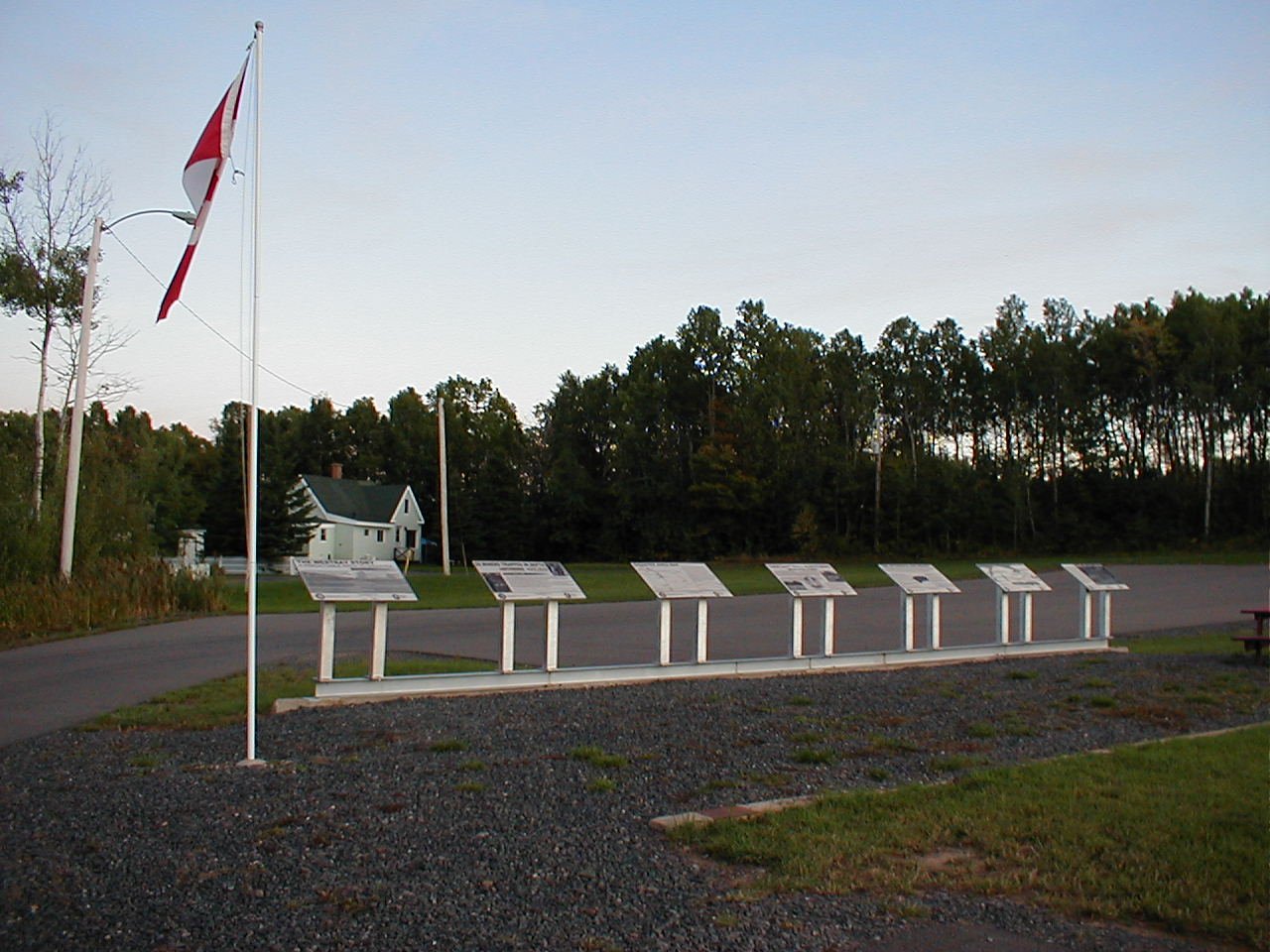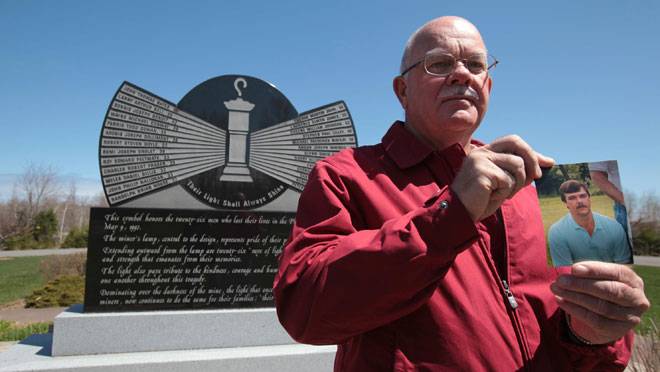[Editor’s note: Editor’s note: This series republishes in its entirety “Hell’s History: The USW’s fight to prevent workplace deaths and injuries from the 1992 Westray Mine disaster through 2016,” commissioned by the United Steelworkers union and downloadable for free as a PDF here.]
On May 9, 1992, at 5:20 a.m., the hellish mix of methane and coal dust that had been allowed to accumulate in the Westray mine exploded. Alan Doyle, whose brother Robbie, at 22, was the youngest miner to die when the fireball raced through the underground works, was working above ground that morning.
In January of this year, Doyle described hearing the explosion and seeing flames belch out of the mine entrance. His brother, at the surface earlier in the shift to haul supplies below, had told him the miners were experiencing trouble on the North Main tunnel. Robbie’s co-worker Larry complained of a headache.
“I argued with Robbie,” Doyle told me, “I told him not to go back down. That was the last I seen of him.”
Shortly after his brother went back down into the mine, Doyle felt the ground shake and saw the lights above ground go dim. “All I could see was flames coming out of the two portals.”
The men who died underground that night with Robbie Doyle were:
John Thomas Bates, 56; Larry Arthur Bell, 25; Bennie Joseph Benoit, 42; Wayne Michael Conway, 38; Ferris Todd Dewan, 35; Adonis J. Dollimont, 36; Rémi Joseph Drolet, 38; Roy Edward Feltmate, 33; Charles Robert Fraser, 29; Myles Daniel Gillis, 32; John Philip Halloran, 33; Randolph Brian House, 27; Trevor Martin Jahn, 36; Laurence Elwyn James, 34; Eugene W. Johnson, 33; Stephen Paul Lilley. 40; Michael Frederick MacKay, 38; Angus Joseph MacNeil, 39; Glenn David Martin, 35; Harry A. McCallum, 41; Eric Earl McIsaac, 38; George S. James Munroe, 38; Danny James Poplar, 39; Romeo Andrew Short, 35; Peter Francis Vickers, 38.
As described in the previous article in this series, the lethal disaster had been made inevitable by Westray management negligence, corner cutting and speed-up, as well as by company decisions to ignore or disable crucial safety equipment. One of the disabled sensors, attached to a machine called a “continuous miner” in the mine’s Southwest 2 tunnel, was supposed to detect methane levels as the explosive gas was released from the coal face by the machine’s excavation. Instead, the unmonitored level of methane reached a critical level and a spark from the machinery ignited it.
The methane explosion drove fine particles of highly flammable coal dust (which should have been regularly ventilated out of the mine and/or “stone dusted” with ground rock to make it less volatile, but was neither properly ventilated nor stone dusted), into the air and created a secondary explosion that drove a fireball through the mine’s tunnels, killing the 26 men on the night shift in less than a minute.
‘Run through intimidation’
Alan Doyle has bitter memories about the dangerous practices encouraged at Westray.
“That mine was a place called hell,” he told me. “It was run through intimidation. The inspectors were led around by the nose and mainly ignored. Once an inspector caught them with a bulldozer underground with unshielded sparks coming off it. Once the inspector left the mine, the foreman ordered Robbie to take the dozer back underground ‘if he wanted to keep his fucking job.’”
Allen Martin lost a brother too in the Westray mine. His brother Glenn had been working at Westray for nine months when it exploded. It was his first mining job, at 35, although his family had been coal miners in Nova Scotia for generations.
In an email exchange in early 2016, he agreed with what Alan Doyle told me about safety conditions at Westray.
“Glenn told me of rock falls, coal dust up past his boots, harassment by his bosses, welding in the mine... You must remember that Glenn never worked in a mine of any kind before Westray so it took a while for him to realize what a bad situation he was in.”
Martin was eager for me to know more about his brother and remembered one incident with particular pride.
“Another time,” he told me, “one of my co-workers, John MacDonald, approached me at shift change and told me of an incident involving his son and Glenn. Apparently there was a rock fall during their shift and everyone was panicking trying to get out of the way. John’s son was hit by something and he was knocked onto the conveyor belt. He was stunned and unable to help himself but Glenn saw he was in distress and was able to grab him and yank him free.”
“John, understandably, was quite distressed while telling me this story but wanted me to know how grateful he was to Glenn for pulling his son to safety.
“Glenn, himself, never mentioned the event to me and when I brought it up to him he just shrugged it off.”
But like any miner, Glenn Martin had a life outside the mine, and it was clear as I spoke with his brother that Glenn had many friends and family members who cherished him.
“When I think of Glenn,” Martin told me, “the first thing that comes to mind is him playing with his nieces and nephews. He would tease them mercilessly and they adored him for it. He loved to hunt and fish, loved to party and you could always count on him to lend a hand. He never had much but he didn’t need much either. Friends – and he had many – family and fun, that was Glenn. He was very popular with the ladies. My wife Debbie always said that Glenn had bedroom eyes.
“The thing I most admired about Glenn was how much he could do with so little. He owned his home, dug out the basement by hand and poured the footings and put up a cinder block wall. He then gutted the house room by room, insulated, painted, rewired. It was well done when completed.”

Like Alan Doyle, Glenn Matheson was close enough to the mine to hear the explosion, but even more than the detonation, he remembers the eerie silence that followed and the stink of coal dust in the air. Matheson, a Presbyterian minister in nearby New Glasgow, a volunteer firefighter and paramedic, rushed to the Westray mine entrance shortly after the explosion and didn’t go back home for days, helping move the bodies retrieved by rescue miners (draegermen) from the mine to the improvised morgue and consoling family members.
Matheson remembered with obvious emotion a moment when a miner’s wife came to the RCMP roadblock near the mine entrance on the day of the explosion, only to be told that there was no news yet about the men below. The wife turned the car around to drive away, and the Mountie saw a child in the back seat of the woman’s car, pressing her face to the rear window and howling for her Daddy.
“Everyone who was at the mine entrance during the rescue operation has at least one big memory like that, something you wish you could delete,” Matheson told me in January of this year.
He remembered how people rallied around to help, mentioning a fax he got hand delivered on the rescue line, a message from the fire hall in a town where he had formerly been a pastor, a town that had endured its own mining disasters. The fax told him that workers from that community were mobilized and could come to the mine.
“Just tell us what you need,” the message read.
Similarly, Matheson told stories about local merchants who came to him at the mine entrance and gave him the keys to their stores, saying he should go into their shops at any time if the survivors or rescue workers needed anything.
The nightmarish task of the draegermen
Matheson had special praise for the draegermen, the rescue workers who went back down into the devastated mine searching for survivors and, as that hope faded, for the bodies of the miners who were killed underground. Justice Richard, who led the provincial public inquiry into the Westray disaster, also praised these heroic workers. In his report, Richard noted:
“I would be remiss if I did not comment on the selfless bravery shown by the rescue teams in the days following the explosion. The conditions in the mine were terrifying. The force of the explosion resulted in severe instability within the roof and walls of the mine. Rock falls, of varying degrees of intensity, were almost continuous. Signs of the devastation were rampant, as were signs of impending danger. The poisonous, unbreathable atmosphere and the actively ‘working’ ground surrounding the mine openings, with the attendant grinding and cracking, were extremely stressful. Yet these men, miners trained in mine rescue, each wearing his personal life-support system, went unquestioningly into that perilous environment with the hope of finding some of their comrades alive. The rescuers came from mainland Nova Scotia, Cape Breton and New Brunswick. We can only be thankful for this valiant display of concern for fellow workers.”
Matheson told me that the rescue workers “aged 20 years in the hours they spent underground.”
Four years earlier, Vern Theriault, one of the Westray survivors and one of the first draegermen to go back into the mine, gave a videotaped interview to Straight Goods News. He remembered going five days without sleep during the rescue attempts.
“I know what hell looks like, after that,” he said.

Like the 95 other courageous rescue workers – draegermen and barefaced miners – who went back underground in the still unstable and dangerous ruins of the Westray mine, Theriault was awarded a Medal of Bravery in the fall of 1994 by then-governor general Ramon Hnatyshyn in the largest civilian investiture ceremony ever held. The rescuers were able to retrieve 15 bodies, but 11 remain in the collapsed tunnels.
The brave efforts of Theriault and his fellow rescuers “demonstrates... what is best about the human spirit, giving and sacrificing for one’s fellow citizens,” said the governor general.
“Look about you, the faces you see are the faces of decent people (who) did not want to have to be heroes, but heroes they are,” Hnatyshyn added.
Later, Theriault was one of the workers who were mobilized by the Steelworkers to go to Ottawa and lobby for a new law, the Westray Act. He and others like him who had lived through the disaster at Westray hoped the new law would make it possible for owners, bosses and managers whose negligence killed workers, to be made accountable and liable to imprisonment. He travelled to the nation’s capital to help with the lobbying efforts in 1999, 2000, 2002 and 2003.
Theriault was happy to see the law passed in 2004. But eight years later, he was in a different mood when he spoke to Straight Goods. “Now I don’t see the law being enforced. Let’s use it.”
Tomorrow: After Westray: A public inquiry, the courts, and taking the fight to Parliament Hill. ![]()
Read more: Labour + Industry
















Tyee Commenting Guidelines
Comments that violate guidelines risk being deleted, and violations may result in a temporary or permanent user ban. Maintain the spirit of good conversation to stay in the discussion.
*Please note The Tyee is not a forum for spreading misinformation about COVID-19, denying its existence or minimizing its risk to public health.
Do:
Do not: